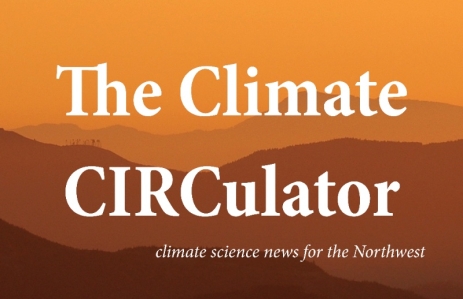Heat waves are uncommon in western Oregon and Washington. Summers tend to be mild and pleasant; dry but not too hot. As a consequence, air-conditioning is rare in many homes, leaving many western Oregonians and Washingtonians unprepared when heat waves do strike. As our planet warms, the number of heat waves in western Oregon and Washington is expected to rise, but according to a recent study, the way the atmosphere interacts with local land and sea could provide some climatic relief.
The study, published in the Journal of Climate, looks at the role the Pacific Ocean and the Cascade Mountain Range could play in the frequency of heat waves in the western Pacific Northwest as the region warms under climate change. Specifically, the study’s authors examine how the ocean and the mountain range act in concert with changes in wind variability to cradle the region in a way that could help buffer the region from heat waves.
Here are the basics: Western Oregon and Washington have mild summer temperatures because the direction of the air flow is generally from the ocean, which is much cooler than the land in summer. (Anyone who has ever fled the warm August temperatures in Portland for the cool temperatures in Astoria can attest to this fact.) This flavor of airflow is—somewhat confusingly—known as “on-shore” flow, and it is important in mitigating the effects of heat waves in the region. In fact, when heat waves do occur, it’s generally because the wind direction shifts, forcing warm continental air to muscle out the cool marine air, which in turn knocks it westward. This pummeling process is called—again somewhat confusingly—“off-shore” flow.
Okay, now let’s add a third type of flow: “downslope” flow. In the western Pacific Northwest, downslope flow occurs when winds overrun the important barriers of the Cascade and Coast Ranges, a phenomenon that produces a descending slope of air down the mountains. As it descends, the flow warms. As the study’s authors, Matt Brewer and Cliff Mass from the University of Washington, note, when the off-shore and downslope flows are strong that’s when the weather in the western Pacific Northwest gets hottest; that’s when you get heat waves.
Brewer and Mass wanted to see how often these conditions would occur in a world warmed by increased greenhouse gases. To parse that out, they used 17 global climate models and one high-resolution, regional climate model that could adequately resolve the regional mountains. (As we’ve noted in past CIRCulator stories, global climate models aren’t the best at handling important regional details, such as mountains. For that you need regional climate models and/or a technique called downscaling.) Through this process, the researchers’ findings suggest that summer climate in western Oregon and Washington is likely to become less variable, leading to strong off-shore winds and downslope flow in the Cascade and Coast Ranges actually becoming less frequent in the future.
The long and short of it is this: Brewer and Mass’s work suggests that there will be fewer heat waves in the western Pacific Northwest resulting from downslope flow. Yet this does not mean that heat waves in the western Pacific Northwest will suddenly—and paradoxically—disappear as the climate warms. In fact, the researchers’ findings suggest heat waves will be more—not less—common under climate change, as one would expect. However, in the western Pacific Northwest the combined power of air flow from the Pacific Ocean interacting with airflow in the Cascade Mountains is expected to play a buffering role that will dial back the frequency of heat waves even as they grow.
As Brewer and Mass note, the same won’t be true for the eastern Pacific Northwest. Sections of eastern Oregon and Washington as well as parts of Idaho won’t experience the same Cascade/coastal cooling, but are instead expected to undergo a relatively larger increase in the number of heat waves compared to their western neighbors as the climate warms.
Study: Journal of Climate
Citation: Brewer, Matthew C., and Clifford F. Mass. “Projected changes in heat extremes and associated synoptic/mesoscale conditions over the northwest US.”Journal of Climate 2016 (2016).
Photo Caption: Flying over the Cascade Mountains. (Photo Credit: Alex Reynolds, some rights reserved.)
 David Rupp is a researcher for OCCRI at Oregon State University. He works on CIRC’s Climate Science and Climate Tools efforts. Interested in climate variability and change, and, in particular, in how these two factors impact the hydrological cycle and water resources, David’s work assessing how well Global Climate Models perform in the Northwest has become the foundation of much of CIRC’s Climate Tools and Community Adaptation efforts, including the Integrated Scenarios and Willamette Water 2100.
David Rupp is a researcher for OCCRI at Oregon State University. He works on CIRC’s Climate Science and Climate Tools efforts. Interested in climate variability and change, and, in particular, in how these two factors impact the hydrological cycle and water resources, David’s work assessing how well Global Climate Models perform in the Northwest has become the foundation of much of CIRC’s Climate Tools and Community Adaptation efforts, including the Integrated Scenarios and Willamette Water 2100.


Stay up to date on the latest climate science news for the Northwest, subscribe to the CIRCulator.
